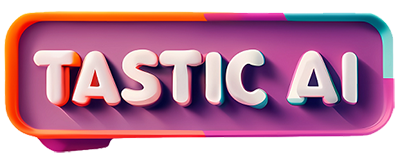Best AI tools for document analysis
From articles and legal agreements to corporate reports and news stories deciphering large documents poses a common challenge. Luckily the rise of Artificial Intelligence (AI) has opened doors to possibilities in document analysis transforming the way we uncover insights, automate tasks and navigate the vast sea of information contained within these texts.
AI powered tools for document analysis serve as digital Swiss Army knives boasting an array of features designed to interpret categorize and leverage the valuable content concealed within texts and files. Whether you’re a researcher hunting, for revelations a legal professional scrutinizing contracts or a business executive sifting through financial statements these AI driven solutions provide an abundance of capabilities to enhance productivity and efficiency. In this article we will explore the realm of document analysis. Delve into top notch AI tools equipped with versatile functionalities tailored to your unique requirements.

Text Extraction
Text extraction refers to the process of capturing and retrieving written content from a variety of document types including scanned papers, images, PDFs, and more. This functionality allows for the conversion of editable text into a format that can be read and analyzed by machines. This makes it suitable for examination and manipulation.
Optical Character Recognition (OCR)
OCR technology takes text extraction a step further by recognizing and converting handwritten characters into digital text format. It proves useful for digitizing printed documents, handwritten notes, and historical manuscripts.
Document Summarization
Document summarization utilizes AI algorithms to generate concise and coherent summaries of lengthy documents. By condensing the important information, it enables users to grasp the main points without having to read the entire document.
Sentiment Analysis
Sentiment analysis, also known as opinion mining, evaluates the tone expressed in documents by determining whether sentiments are positive, negative, or neutral. It is widely employed in assessing customer sentiment in reviews, social media posts, and feedback.
Keyword Extraction
Keyword extraction involves identifying and extracting keywords or key phrases from documents. This aids in understanding the themes, topics, or subjects discussed within the text.
Topic Modeling
Topic modeling is a technique that helps organize and categorize themes or subjects in a collection of documents. It plays a role in efficiently indexing and managing large sets of documents while aiding in the discovery of relevant content.
Text Classification
Text classification involves the process of assigning documents to predefined categories or topics based on their content. This approach is widely utilized to automate tasks like sorting emails, classifying news articles, and filtering user-generated content.
Entity Recognition
Entity recognition plays a role in identifying and categorizing specific entities within documents, such as names of people, organizations, dates, and locations. This capability greatly assists in extracting information and mapping relationships between entities.
Language Translation
Language translation tools are indispensable when it comes to translating documents from one language to another. They effectively break down language barriers, ensuring global communication.
Document Clustering
Document clustering involves grouping documents together based on their content similarity. This technique proves helpful for organizing and exploring document collections, enabling efficient retrieval of related materials.
Text Analytics Dashboard
A text analytics dashboard provides users with visualizations and insights derived from document analysis. This allows users to explore patterns, trends, and statistics derived from the analyzed data, empowering them to make decisions.
Text to Speech (TTS)
Text to speech technology converts written text into audio, making it accessible for individuals with visual impairments and enabling the creation of audio content for presentations or audiobooks.
Semantic Search
Semantic search goes beyond keyword-based searches by understanding the meaning and context of words. It enhances search results by considering relevance, leading to more advanced and accurate search outcomes.
Compliance and Legal Document Analysis
Tools for compliance and legal document analysis are designed to identify non-compliant content within legal documents, contracts, or regulatory texts. They play a role in ensuring adherence to legal standards and requirements.
Research and Academic Document Analysis
Research and academic document analysis tools facilitate the extraction of citations, references, and valuable scholarly insights from papers. These tools assist researchers in gathering relevant sources while maintaining proper referencing practices.
Natural Language Generation (NLG)
NLG tools automate the process of generating human text from structured data or templates. They find applications in creating reports, articles, and generating types of content.
Document Comparison
Document comparison tools enable users to compare two or more documents in order to identify differences as well as similarities between them. This functionality proves valuable in matters, contractual agreements, and version control scenarios.
Data Extraction
Data extraction tools specialize in capturing data such as tables and forms from various types of documents. They help in transforming data into a format that can be easily analyzed.
Protection of Privacy and Redaction
Redaction tools automatically conceal or obscure sensitive information in documents to ensure compliance with privacy regulations and safeguard data.
Annotation of Text and Highlighting
Text annotation and highlighting features enable users to mark and emphasize sections or elements within documents, facilitating collaboration and easy reference.
These functionalities collectively empower users to extract insights, streamline document-related workflows, and make better decisions across various industries and use cases. Whether you’re involved in research, handling documents, or automating business processes, understanding these capabilities and selecting suitable AI tools can greatly enhance the efficiency and accuracy of document analysis.
More AI tools to summarize large documents
Talk To Books – Explore books with AI
Talk to Books is a one-of-a-kind platform developed by Google that allows…
Humata – ChatGPT for your files
Humata AI is an assistant powered by intelligence that has been designed…




